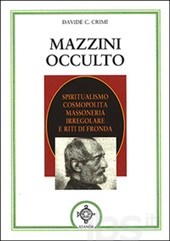 Recensione a Gaetano Salvemini: il filosofo, lo storico, il politico di Antonino Di Giovanni
Recensione a Gaetano Salvemini: il filosofo, lo storico, il politico di Antonino Di Giovanni
Anche per le sue sembianze, la conformazione del viso, la barba bianca, Salvemini venne talora inteso come un “Mazzini redivivo” e senza dubbio lo fu nella sostanza: anche se i tempi vissuti da Salvemini, i tumultuosi anni della degenerazione autoritaria del giovane stato italiano, avevano attraversato un cambiamento epocale che rendeva alcuni riferimenti inapplicabili. In particolare, l’idealismo era attaccato da destra e da sinistra. Il demone del materialismo storico si era impadronito della sinistra, mentre la destra rivendicava ogni impostazione spiritualista ma divorandola e risputandola in una forma nuova, inusitata e insostenibile.
Per spiegare questo passaggio, Di Giovanni richiama Norberto Bobbio che riporta a sua volta la lettera di Salvemini a Gobetti, in cui lo storico definisce le basi del suo pensiero «Illuminismo, storicismo, marxismo». Conoscendo l’insanabile antinomia tra il gradualismo spiritualista di Mazzini e il materialismo storico di Marx, troviamo qui le ragioni di una differenza che, se pur può avere basi comuni nell’illuminismo, diverge ampiamente negli altri due termini della triade.
Sono i tempi che richiedono un’analisi diversa. Salvemini prende la posizione del positivismo politico. Salvemini, afferma Di Giovanni, interpreta questa posizione con «scelta di campo anti-idealistica», nel quadro della montante degenerazione dell’idealismo soggettivista divenuto «vago ed equivoco».
In questo senso, Salvemini si oppone a tutti questi intellettuali che tradiscono la deontologia della chiarezza e dell’onestà. Questa visione cristallina gli permetterà di denunciare da subito l’invasione e il deterioramento degli spazi democratici, a denunciare l’insostenibilità dell’imperialismo, la sventatezza della decisione della guerra coloniale in Libia, l’emergente culto dell’autorità che porterà al fascismo.
Tra i sottoscrittori della dichiarazione sull’assassinio Matteotti, sostenitore del Circolo di Cultura di Firenze e del giornale NON MOLLARE, il professore Gaetano Salvemini viene arrestato nel 1925 dalla polizia fascista. Paradossalmente, proprio un’amnistia data dal governo per liberare quanti erano stati invischiati nel delitto Matteotti, lo rimette in libertà, riparando in Francia dapprima e, dal 1927, in America, dove ebbe un importantissimo ruolo nella fondazione della Mazzini Society e le attività del movimento internazionale dei lavoratori.
Su Mussolini, non è possibile equivocare. Seguendo le impronte di Salvemini, Di Giovanni è lapidario: «Il fantoccio fu Mussolini. Questi è il propagandista della combinazione di alte autorità militari, grossi proprietari di terre e grandi industriali (…) la dimensione per così dire estetica del potere (…) funzioni decorative e teatrali (…) L’unico ministero al quale Mussolini si dedica con tutto il cuore e con gran successo è un ministero che non esiste ufficialmente: il ministero della propaganda».
La chiara visione di Salvemini viene da lontano: già ben prima che il fascismo prendesse il potere, il professore aveva visto con chiarezza la deriva del culto dell’autorità dato in pasto al populismo. Più in profondità, aveva visto anche il vero committente della visione interventista. Scrive ancora Di Giovanni: «Il Banco di Roma (…) nel 1880 la sua costituzione era avvenuta per iniziativa di membri dell’aristocrazia cattolica “nera” della capitale (…) i cattolici erano entrati nella vita politica del Paese come gruppo di pressione che aveva in mano una banca (…) la prima mossa nello scenario internazionale dei nobili uomini d’affari papalini (Borghese, Rospigliosi, Giustiniani-Bandini, Gabrielli, Soderini, capitanati dal dinamico presidente Ernesto Pacelli (…) penetrare economicamente in Tripolitania».
Acutamente riportato in incipit al terzo capitolo del libro recensito, questo semplice aforisma di Salvemini racchiude lo spirito di un’epoca, restando drammaticamente attuale: «l’imperialismo è odioso nei forti e ridicolo nei deboli».
